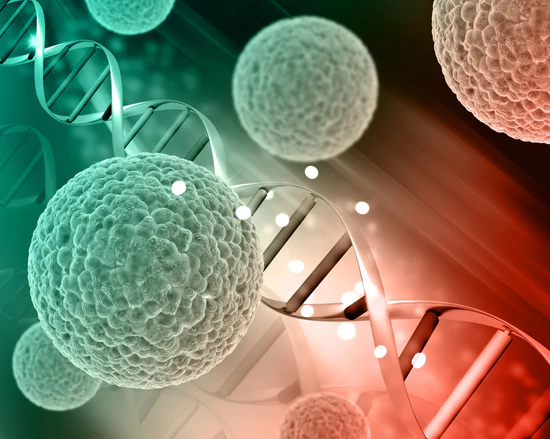Eosinophils and Cancer: Understanding the Relationship
Eosinophils are a type of white blood cell that play a crucial role in the body’s immune response. While they are typically associated with allergic reactions and certain parasitic infections, recent research has shed light on the potential relationship between eosinophil levels and the development of cancer. In this comprehensive article, we will explore the role of eosinophils in cancer, the significance of elevated or decreased eosinophil levels, and the implications for cancer diagnosis, prognosis, and treatment.
Understanding Eosinophils
Eosinophils are a type of granulocyte, a class of white blood cells that contain granules filled with various enzymes and proteins. These cells are primarily responsible for fighting off parasitic infections and mediating certain allergic and inflammatory responses.Eosinophils are produced in the bone marrow and are released into the bloodstream, where they can travel to various tissues and organs throughout the body. They are particularly abundant in the gastrointestinal tract, the respiratory system, and the skin, where they play a crucial role in the body’s defense against foreign invaders.
The Role of Eosinophils in Cancer
The relationship between eosinophils and cancer is a complex and multifaceted one. Eosinophils have been observed to play both pro-tumorigenic and anti-tumorigenic roles, depending on the specific type of cancer and the stage of the disease.
Pro-Tumorigenic Role of Eosinophils
In some cases, eosinophils have been found to promote the growth and spread of cancer cells. This can occur through several mechanisms:
- Angiogenesis: Eosinophils can release various growth factors and cytokines that stimulate the formation of new blood vessels (angiogenesis), which can provide a steady supply of nutrients and oxygen to the tumor.
- Immunosuppression: Eosinophils can release substances that suppress the body’s immune response, allowing cancer cells to evade detection and destruction by the immune system.
- Tissue Remodeling: Eosinophils can contribute to the remodeling of the tumor microenvironment, creating a more favorable environment for cancer cell growth and invasion.
Anti-Tumorigenic Role of Eosinophils
Conversely, eosinophils have also been observed to play a protective role against cancer. This can occur through the following mechanisms:
- Direct Cytotoxicity: Eosinophils can release cytotoxic granules and enzymes that directly damage and kill cancer cells.
- Antibody-Dependent Cell-Mediated Cytotoxicity: Eosinophils can recognize and bind to cancer cells that are coated with specific antibodies, leading to their destruction.
- Modulation of the Immune Response: Eosinophils can interact with other immune cells, such as T cells and natural killer cells, to enhance the body’s anti-cancer immune response.
The balance between these pro-tumorigenic and anti-tumorigenic roles of eosinophils can vary depending on the type of cancer, the stage of the disease, and the specific microenvironment within the tumor.
Eosinophil Levels and Cancer
The levels of eosinophils in the body can provide valuable information about the presence and progression of certain types of cancer. Here’s a closer look at the significance of elevated and decreased eosinophil levels in the context of cancer:
Elevated Eosinophil Levels
Elevated eosinophil levels, a condition known as eosinophilia, have been associated with various types of cancer, including:
- Hematological Malignancies: Eosinophilia is commonly observed in certain blood cancers, such as leukemia, lymphoma, and myeloproliferative neoplasms.
- Solid Tumors: Elevated eosinophil levels have been reported in various solid tumors, including lung cancer, gastrointestinal cancers, and certain types of skin cancer.
The presence of eosinophilia in cancer patients can indicate a more aggressive disease, a poorer prognosis, or the presence of specific genetic mutations or chromosomal abnormalities. However, it’s important to note that elevated eosinophil levels can also occur in non-cancerous conditions, such as allergies, infections, and certain autoimmune disorders.
Decreased Eosinophil Levels
In contrast, decreased eosinophil levels, or eosinopenia, have also been observed in some cancer patients. This can be a result of the cancer’s suppressive effects on the immune system or the side effects of cancer treatments, such as chemotherapy.Eosinopenia has been associated with a poorer prognosis in certain types of cancer, as it may indicate a weakened immune response and a reduced ability to fight the disease.
Eosinophils and Cancer Diagnosis, Prognosis, and Treatment
The assessment of eosinophil levels can play a role in various aspects of cancer management, including diagnosis, prognosis, and treatment.
Diagnosis
Eosinophil levels can be used as a diagnostic tool for certain types of cancer, particularly hematological malignancies. Elevated eosinophil levels may prompt further investigation and diagnostic testing to confirm the presence of cancer.
Prognosis
The level of eosinophils in cancer patients can provide valuable information about the prognosis of the disease. In general, elevated eosinophil levels have been associated with a poorer prognosis, while decreased eosinophil levels may indicate a weaker immune response and a less favorable outcome.
Treatment
The role of eosinophils in cancer treatment is an area of ongoing research. In some cases, therapies that target eosinophils or modulate their activity may be explored as potential treatment options. Additionally, the monitoring of eosinophil levels during cancer treatment can provide insights into the effectiveness of the therapy and the patient’s response to it.
Frequently Asked Questions (FAQ)
- What is the normal range for eosinophil levels?
- The normal range for eosinophil levels in the blood is typically between 0 and 500 cells per microliter (cells/μL) or 0 to 5% of the total white blood cell count.
- What is considered an elevated eosinophil level?
- Eosinophilia is generally defined as an eosinophil count above 500 cells/μL or more than 5% of the total white blood cell count.
- What types of cancer are associated with elevated eosinophil levels?
- Elevated eosinophil levels have been observed in various types of cancer, including hematological malignancies (such as leukemia, lymphoma, and myeloproliferative neoplasms) and certain solid tumors (such as lung cancer, gastrointestinal cancers, and some skin cancers).
- How do decreased eosinophil levels (eosinopenia) relate to cancer?
- Decreased eosinophil levels, or eosinopenia, have been associated with a poorer prognosis in some cancer patients, as it may indicate a weakened immune response and a reduced ability to fight the disease.
- Can eosinophil levels be used to diagnose cancer?
- Eosinophil levels can be used as a diagnostic tool for certain types of cancer, particularly hematological malignancies, where elevated eosinophil levels may prompt further investigation and testing.
- How do eosinophil levels affect the prognosis of cancer patients?
- In general, elevated eosinophil levels have been associated with a poorer prognosis in cancer patients, while decreased eosinophil levels may also indicate a less favorable outcome.
- Are there any treatments that target eosinophils in cancer?
- The role of eosinophils in cancer treatment is an area of ongoing research, and therapies that target eosinophils or modulate their activity may be explored as potential treatment options.
- Can eosinophil levels change during cancer treatment?
- Yes, eosinophil levels can change during cancer treatment, and monitoring these levels can provide insights into the effectiveness of the therapy and the patient’s response to it.
- Are there any non-cancerous conditions that can cause elevated eosinophil levels?
- Yes, elevated eosinophil levels can occur in non-cancerous conditions, such as allergies, infections, and certain autoimmune disorders.
- How can I interpret my eosinophil levels in the context of my cancer diagnosis?
- It’s important to discuss your eosinophil levels with your healthcare provider, as the interpretation of these levels in the context of your cancer diagnosis and treatment requires a comprehensive evaluation by a medical professional.
Comparison of Eosinophil Levels and Cancer Prognosis
| Cancer Type | Elevated Eosinophils | Decreased Eosinophils |
|---|---|---|
| Hematological Malignancies | Generally associated with a poorer prognosis | May indicate a weaker immune response and a less favorable outcome |
| Solid Tumors | Generally associated with a poorer prognosis | May indicate a weaker immune response and a less favorable outcome |
| Certain Skin Cancers | May be associated with a better prognosis | Limited data available |
Source: National Cancer Institute
Conclusion
The relationship between eosinophils and cancer is a complex and multifaceted one, with eosinophils playing both pro-tumorigenic and anti-tumorigenic roles. The assessment of eosinophil levels can provide valuable insights into the diagnosis, prognosis, and potential treatment of various types of cancer.By understanding the significance of elevated or decreased eosinophil levels in the context of cancer, healthcare professionals can better interpret these laboratory findings and develop more personalized and effective cancer management strategies. Ongoing research in this field will continue to shed light on the intricate interplay between eosinophils and the development, progression, and treatment of cancer.



